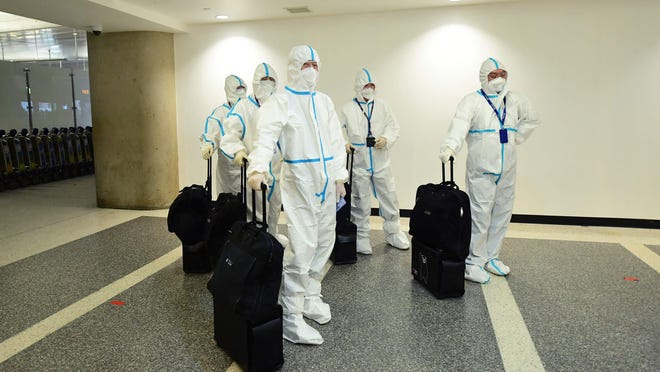The common cold made an early appearance this summer with an unprecedented uptick of respiratory viruses. Since then, health care providers say cases haven’t slowed down.
“You should never underestimate the repertoire and timing of viruses because they’re always around,” said Dr. Len Horovitz, internist and pulmonary specialist at Lenox Hill Hospital in New York City. “I’m seeing just as many colds as I saw this summer, that’s not dying.”
Although milder than a typical pre-pandemic winter, the colder months haven’t stopped seasonal viruses like the flu from joining SARS-COV-2 – the virus that causes COVID-19 – making it harder for Americans to know what they have when they wake up with the sniffles.
Cold symptoms are generally less severe than COVID-19 or the flu, said Dr. Manoj Gandhi, senior medical director for genetic testing solutions at Thermo Fisher Scientific. But breakthrough infections of COVID-19 in vaccinated people typically result in mild symptoms that are easy to confuse.
“When people get vaccinations for the flu (or COVID), the whole point of the vaccine is that it makes the disease less severe,” he said. “You get a muted response to the virus … seeing a mild fever, maybe some weakness here and there.”
Many cold, flu and COVID-19 symptoms overlap: fever, runny nose, sore throat, coughing and general fatigue. Experts say the only symptom that may distinguish a nasty cold from COVID-19 is the loss of taste or smell.
There’s also not much difference in illness duration. Symptoms from a cold may last seven to 10 days. Experts say COVID-19 symptoms typically appear two to 14 days after exposure and usually last up to two weeks, but it varies by person.
Signs and symptoms of the flu typically resolve after three to seven days, according to the Centers for Disease Control and Prevention, but general weakness and fatigue can last up to two weeks.
The only definitive way to know the difference between a cold or a mild breakthrough infection of COVID-19 is by PCR testing, Gandhi said. Patients can be tested simultaneously for COVID-19 and influenza with a single swab.
“With one sample you can tell whether it’s COVID or influenza A or influenza B,” he said. “If it’s neither of them, you know it’s probably a cold.”
Regardless of the diagnosis, experts urge Americans who are feeling unwell to stay home and follow public health strategies practiced throughout the pandemic, like masking and good hand hygiene.
“Stay home and take care of yourself and reduce the exposure,” Horovitz said. “People don’t want to be around somebody who’s sick.”
Follow Adrianna Rodriguez on Twitter: @AdriannaUSAT.
Health and patient safety coverage at USA TODAY is made possible in part by a grant from the Masimo Foundation for Ethics, Innovation and Competition in Healthcare. The Masimo Foundation does not provide editorial input.
